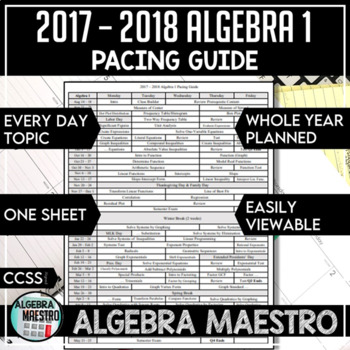Common Core Pre Algebra Pacing Guide
The Common Core State Standards in mathematics were built on progressions: narrative documents describing the progression of a topic across a number of grade levels, informed both by research on children’s cognitive development and by the logical structure of mathematics. This project is organizing the writing of final versions of the progressions documents for the K–12 Common Core State Standards. Is working to design and develop well-engineered assessment tools to support US schools in implementing the Common Core State Standards for Mathematics (CCSSM). Provides video lessons grade 3-HS aligned to the common core. You can design play lists for your students and monitor their progress.
Great tier 2 intervention, additional practice for students, new learning for you. Bill McCullum, lead writer of the common core math standards writes a blog keeping us updated on the latest materials and resources related to the common core.
Provides guidance to states, assessment consortia, testing companies, and curriculum developers by illustrating the range and types of mathematical work that students experience in a faithful implementation of the Common Core State Standards, and by publishing other tools that support implementation of the standards. Is a professional resource for educators passionate about improving students’ mathematics learning and performance. This site features classroom examples of innovative teaching methods and insights into student learning, tools for mathematics instruction that teachers can use immediately, and video tours of the ideas and materials on the site. Directed at students developed by the Jordon school district Core Math Tools is a downloadable suite of interactive software tools for algebra and functions, geometry and trigonometry, and statistics and probability. The tools are appropriate for use with any high school mathematics curriculum and compatible with the Common Core State Standards for Mathematics in terms of content and mathematical practices. Java required.
You can search the Smithsonian site by Washington state standards and CCSS and the resources are connected to each standard. Gives examples of what each practice looks like at each grade level. An interactive Algebra curriculum that includes mental math.
Math and science practice in a game like context k-12, course specific and all the way through pre-calculus. Standards based math activities. Lesson plans, learning progressions, universal screening tools. Each grade level has multiple units aligned to the common core. Go to the grade level ban and the grade level on the right. This could be a full curriculum. Check out the curriculum maps based on a learning progression and the units being developed by Common Core Maps.
A map of the standards by grade level with links to khan academy videos by standard. Find Vocabulary cards aligned to CCSS standards for Grades K-12 with pictures in English as well as cards in Chinese (grades 1-3), French (grades 1-5), Spanish (grades 1-6), Portuguese (grades 1-2) these are math tasks aligned to the same NY modules that we modeled our modules after. Are sortable by standard. Covering a range of standards from 6th grade through Geometry. Includes task in English and Spanish, teacher instructions, and a rubric 3,000+ CCSS Lessons designed by master teachers –click on by mathematical course to see the problems by course from Pre-algebra to Pre-Calculus.
The core of this collection is a library of more than 600 non-routine mathematics problems known as Stella’s Stunners. The problems range from simple visual problems, requiring no specific mathematical background, to problems that use the content of Pre-Algebra, Algebra I, Geometry, Algebra II and Trigonometry, up through Pre-Calculus. The Stella problems are not typical textbook exercises. They are considered “non-routine” problems because the methods of attacking them are not immediately obvious. Because these problems can supplement and enliven traditional mathematics courses in a variety of ways, they have included materials to assist in using Stella problems in your teaching Provides full curriculum aligned to the CCSS standards that is in alignment with the integrated approach to teaching the standards.

The MVP classroom experience begins by confronting students with an engaging problem and then allows them to grapple with solving it. As students’ ideas emerge, take form, and are shared, the teacher orchestrates the student discussions and explorations towards a focused mathematical goal. As conjectures are made and explored, they evolve into mathematical concepts that the community of learners begins to embrace as effective strategies for analyzing and solving problems. These strategies eventually solidify into a body of practices that belong to the students because they were developed by the students as an outcome of their own creative and logical thinking.
This is how students learn mathematics. They learn by doing mathematics.

They learn by needing mathematics. They learn by verbalizing the way they see the mathematical ideas connect and by listening to how their peers perceived the problem. Students then own the mathematics because it is a collective body of knowledge that they have developed over time through guided exploration.

Common Core Pre-algebra Textbook
This process describes the Learning Cycle and it informs how teaching should be conducted within the classroom. Math is about much more than crunching numbers. It’s about building modern cities, designing virtual realities, composing music, and exploring space. When you think about it, math really is AWESUM. Use this jam-packed, NEW collection of videos, lesson plans, and interactive games to help your students engage with curriculum and tap into the true power of numbers. These are hand-picked resources from PBS.